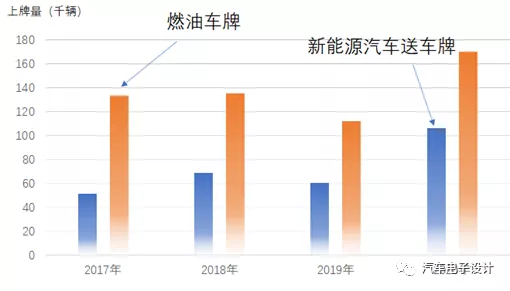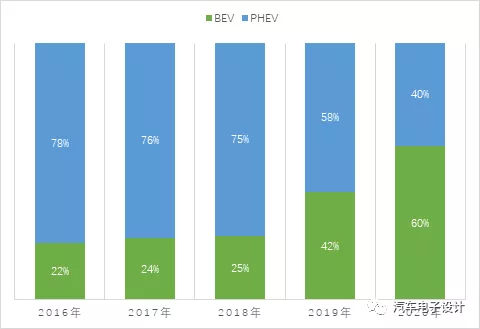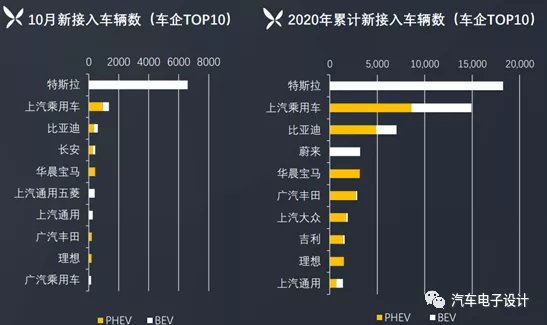Introduction
Recently, I’ve been quite busy and getting home late, so I’d like to write something interesting. Many friends have been asking me about the future development of new energy vehicles in Shanghai. As residents of the city, people are worried about the next steps of the city’s restrictions, such as the restriction of external license plates and the limited passage time on elevated roads. Based on the data from the “October 2019 Shanghai New Energy Vehicle Monitoring Report – Passenger Vehicle Section”, I will make some judgments.
The Situation of New Energy Vehicles in Shanghai
In Shanghai, there has been a turning point if comparing the number of new energy vehicles to the number of license plates. From 2016 to 2019, the amount of license plates issued in Shanghai were 132,000, 133,000, 135,000, and 112,000 respectively, with an estimated total of 170,000 in 2020. On the other hand, the number of new energy vehicles will be about 51,000, 68,700, 60,500 and 106,300 respectively from 2017 to 2020. In terms of composition, the demand for new energy vehicle license plates in 2021 will definitely exceed that of license plates for gas-powered cars.

From October’s perspective, the policy of restricted driving was announced on October 24th. Interestingly, the number of new energy vehicle registrations was at a low point of 7,260 in October. The monthly registration of new energy vehicles in the Shanghai region is usually between 7,000 and 10,000. Based on the doubling of the number of orders received by car manufacturers’ stores in Shanghai, it is expected to reach 18,000 units in November and exceed 20,000 units in December.
Note: There are certain qualification requirements for acquiring a new energy vehicle plate in Shanghai.

In fact, there are so many people in Shanghai, from the perspective of new car sales, there are some Shanghainese-owned cars, some external license plates, some new energy vehicles, and some gas-powered cars. From 2016 to September 2020, the retail sales of narrowly defined passenger cars in Shanghai were 690,000, 690,000, 630,000, 600,000, and 400,000 respectively. Excluding new cars with Shanghai license plates each year, especially in terms of restrictions, there is a strong demand for new energy vehicles.
Starting from 2020, the number of external license plates will be further reduced, and the current proportion is 31.48%. According to the current situation, the restriction of the inner ring of Shanghai will reduce it by 5%; by the time the restriction of the middle ring is implemented, the proportion of external license plates will drop to around 20%.
Issues with PHEV
Based on this trend, we can see that the market demand will drive Shanghai consumers to apply for green license plates. From a structural perspective, PHEV has always been dominant in Shanghai before Tesla’s presence. This turning point is seen in the fact that from January to September 2020, BEVs have surpassed 60% for the first time.
Note: There are several pieces of data here. In January-October of this year, the total number of license plates registered in Shanghai was 68,360, with 57,469 new energy passenger cars accessed by the management center (there is a lag effect here), among which BEVs accounted for 65.7%. In terms of retail data, the retail sales of new energy vehicles in Shanghai in January-September 2020 were 58,489, including 22,102 plug-in hybrid vehicles, mainly including Roewe ei6, Roewe eRX5, Passat PHEV, Touareg L PHEV, BMW 5 series, Corolla hybrid, BYD Tang, Li ONE, and BYD Song. There were 36,562 pure electric vehicles, mainly including Tesla Model 3, Roewe Ei5, NIO ES6, Buick Velite 6, BYD Han, XPeng P7, NIO ES8, Hong Guang Mini, and WM EX5.

Looking at the data in the Shanghai area according to the platform monitoring center, there is a certain lag effect in the single-month access of the entire Tesla. Looking at the cumulative access, the proportion of BEVs has increased this year, mainly driven by Tesla, SAIC passenger cars, and NIO. Moreover, a large number of PHEVs of joint ventures were registered in Shanghai.

Personally, I think there are several points:
1) The issuance of new energy license plates in Shanghai will also be within a range, possibly around 150,000. In the future, new energy vehicle license plates will also become a scarce resource and transition to auctions, which should be at the same level as the quantity of fuel vehicle license plates put up for auction.
2) The proportion of PHEVs in Shanghai is expected to gradually decline to 40%. Under the condition of a total quantity limitation, there is a possibility that PHEV license plates will be auctioned separately in the future. If you’re not interested in buying BEVs in the next few years, it is recommended to consider purchasing a PHEV.3) Due to the fact that there are local new energy vehicle technology standards in Shanghai, not all new energy vehicles are compliant, and the management of this area in the future is also very interesting. What we have seen this year is that the overall new energy vehicle encouragement policy has been pushed down to the local level for substantive promotion, and there is also certain screening that exists objectively.
Summary
From the current situation, in order to obtain a better living experience in Shanghai, it is still wise to get a new energy vehicle as soon as possible. Our family’s configuration will also be changed to include one PHEV and one BEV.
This article is a translation by ChatGPT of a Chinese report from 42HOW. If you have any questions about it, please email bd@42how.com.
